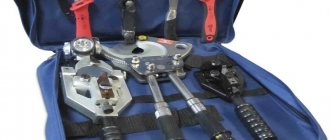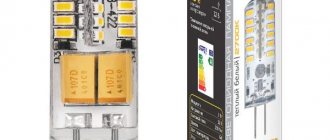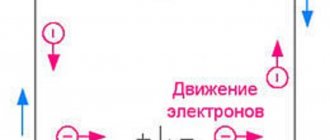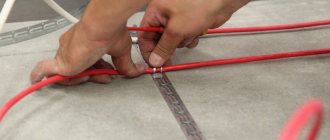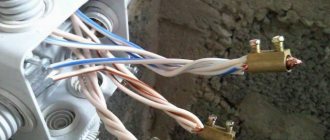Power supply lines today need high-quality equipment that can supply the required current. In Russia, dry transformers are used to transmit electricity to the end consumer. They increase and decrease the voltage, change the frequency and phase of the current. What is a dry transformer, application features, design features of the transformer installation will be discussed further. How to choose the optimal device of Russian and foreign production, expert advice will help.
Characteristics of dry transformates
Before installing a dry-type transformer, it is important to accurately determine its technical characteristics, which will provide basic information about the suitability of the unit for operation in certain conditions.
Among the most important parameters are:
- Rated power - determines the volume of processed electricity for a dry transformer.
- Rated voltage - shows the value of the voltage level that can be supplied to each of the high, medium and low potential windings.
- Overload factor - shows by what amount the workload can exceed the rated current value.
- No-load and short-circuit loss coefficients.
- The degree of dust-moisture resistance and climatic performance determines the external conditions under which the unit can be operated and the insulation strength is maintained.
- Overall dimensions and weight of a dry-type transformer.
Main settings
The most crucial moment in the operation of the devices in question is ensuring the temperature conditions of the windings. To help in choosing or purchasing a dry type apparatus for power supply to various facilities, let’s consider several basic operational parameters:
- Power, kVA.
- Rated voltage of the primary and secondary windings.
- The heat transfer of an insulating system is the sum of the maximum ambient temperature + the average temperature rise in the windings + the difference between the average temperature rise in the windings and the highest value in them.
- Core and coils - of particular importance are possible damage to the core or accumulation of delaminations (copper or aluminum conductors).
There are various design types of transformers, determined primarily by the methods used to insulate their windings. Among them are known: vacuum impregnation, encapsulation and cast coil. Let's consider each of them separately.
What type of insulation of dry transformer
The design of a dry-type transformer is almost the same as that of an oil-cooled transformer.
There are two main types of dry-type power transformers (besides the fact that the windings are made of either copper or aluminum):
- dry cast resin
- and air barrier insulation (open windings).
Due to the use of monolithic and cast windings, transformers of this series dissipate heat much worse, so they use conductors of larger cross-sections. And during operation, the removal of thermal energy may require forced air supply or more space in the housing, the presence of additional ventilation ducts to remove air masses.
location of ventilation holes
At the present stage of development of dry-type transformers, the manufactured windings are filled with epoxy compounds.
Similar transformers are currently produced both abroad and in Russia and the CIS countries (METZ named after V.I. Kozlov RB, Transformer CJSC, Podolsk; SVEL Group of Companies, Yekaterinburg and others). There are two technologies for manufacturing dry power transformers with cast insulation: 1) vacuum technology; 2) roving technology.
When producing dry transformers using vacuum technology, the finished transformer windings are filled in a vacuum with an epoxy compound with a quartz filler (the so-called geafol), the preparation process of which also takes place in a vacuum. Until the end of the 50s of the last century, the technology of filling high-voltage windings of dry transformers with epoxy resin in air was widely used. In accordance with this technology, high voltage windings were impregnated with an insulating dielectric, and then they were dried. High-voltage transformer windings filled using this technology were of low quality, since the coils contained various impurities and micropores filled with air, which in many cases led to increased values of partial discharges, rapid aging of the insulation, reduced service life of the transformer, and in some cases could even cause an emergency insulation breakdown.
The simplicity of the technology for manufacturing windings impregnated in air also led to other, extremely undesirable, consequences: the windings were subjected to humidification and moisture absorption, which again caused surface discharges and accelerated aging of the insulation; transformers with such windings did not have the necessary mechanical strength, resistance to short circuit currents and were quite bulky.
The vacuum technology of filling transformer windings, which replaced the filling of windings in air, made it possible to completely eliminate various impurities and gas micropores from the insulation composition, and significantly improved the dielectric strength of the insulation with respect to partial discharges. The windings processed using this technology were closed on all sides with an epoxy shell with a thickness of 5 to 20 mm, which gave them the necessary rigidity and protected them from moisture and exposure to an aggressive environment.
The design and production technology of dry-type transformers at the highest technical level were developed by the famous company TRAFO-UNION, which sold its license to many companies. Thus, vacuum winding filling technology spread to many transformer plants and by the mid-1970s. became dominant in the production of epoxy transformers.
Transformers manufactured using the vacuum technology described above were considered trouble-free under any operating conditions, even the most extreme. But as the number of transformers in operation increased, the following shortcomings began to emerge:
- formation of cracks in the epoxy winding casing when overloaded at about 60...80% of the rated power of the transformer, which was initially in a cold state, or when the windings of a disconnected transformer are cooled to a temperature below -15...-20°C;
- The formation of cracks was caused by the fact that during sudden temperature changes, the rapidly heating winding material (copper) ruptured the epoxy-quartz winding body. insufficient resistance to dynamic short circuit forces;
- The high and low voltage windings constitute two independent winding cylinders, the mechanical strength of which in some cases is insufficient.
As a result of research, ABB developed a new technology for the production of cast resin transformers: by sealing layer windings using pure resin and glass filaments.
The idea of block winding is that the low and high voltage windings are connected to each other via fiberglass battens to form a single solid block.
By using approximately 80% glass fiber filling and optimally combining the transverse and cross directions of the glass fibers during the winding process, it is possible to obtain an extremely strong winding unit with high mechanical strength, which eliminates any movement of the windings under the influence of transverse or longitudinal forces. This leads to high resistance to short circuits and stability of technical characteristics when exposed to low and high temperatures.
Insulation resistance of dry-type transformers
The insulation resistance of dry transformers at a winding temperature of 20-30 °C should be for transformers with a rated voltage:
- Up to 1 kV inclusive - at least 100 MOhm;
- More than 1 kV up to 6 kV inclusive - at least 300 MOhm;
- More than 6 kV – at least 500 MOhm.
Insulation resistance of dry-type transformers Table 5. Dry-type transformers of Russian production and CIS countries
| Production capacities (Russia and CIS) of existing factories producing dry power transformers | Pieces/year (approximate data) | Type of dry-type transformers produced |
| OJSC Holding Company Elektrozavod, Moscow | 3000 | Cast insulation air barrier insulation |
| UE "METZ im. V. I. Kozlova", Republic of Belarus, Minsk | 4000 | Cast insulation air barrier insulation |
| LLC "Electrophysics", St. Petersburg | 1000 | Air barrier insulation |
| Group, Ekaterinburg | 1000 | Cast insulation |
| JSC "Kentau Transformer Plant", GC, Kentau | 1000 | Cast insulation air barrier insulation |
| OJSC "Ukrelectroapparat", Ukraine, Khmelnitsky | 500 | Cast insulation air barrier insulation |
| CJSC "Transformer", Podolsk | 1000 | Cast insulation |
| OJSC "NWTT", Yekaterinburg | 500 | Cast insulation |
| TOTAL: | 12 000 |
Dry-type power transformer design
Advantages of dry transformers over oil transformers
Advantages of dry-type transformers
It's time to look at the many benefits of dry-type transformers.
- Safety. In devices using oil, there is a possibility of oil leakage or fire of the converter;
- Easy to use and install. Such transformers can be installed in any premises. Short wires are suitable for installation, and maintenance consists of cleaning the ducts and periodic inspection. While in “wet” converters it is necessary to change the oil regularly. Indeed, in other cases it changes, namely, it worsens its properties and clogs the ducts;
- Environmental friendliness. These devices can be installed in areas where environmental safety is required. These could be schools, kindergartens, sanatoriums, etc. And this became possible thanks to the absence of oil in the device, which means there is no release of harmful substances;
- Ease of purchase. You can always buy dry oven transformers to order or in specialized stores. The cost of the devices is relatively low. But at the same time, you need to understand that the price depends on the type and power of the transformer.
- Modern components. Thanks to modern components, manufacturers have managed to reduce weight and reduce dimensions.
The disadvantages of dry transformers are:
1. High cost
Oil transformers cost significantly less than dry transformers. This is due to an increase in the number of investments of active materials due to an increase in insulation distances in the air and a deterioration in the cooling conditions of the windings.
2. Losses
Compared to oil transformers, dry transformers have large no-load losses. This is due to the increase in the size of the magnetic system due to large insulation distances.
Main selection criteria
When choosing a dry-type transformer model, you should pay attention to the following:
- Explosion proof;
- Fire safety.
In addition, it is necessary to pay attention to the performance of the device:
- Noisiness;
- Size;
- Weight;
- Environmentally friendly.
Many experts recommend not saving money and giving preference to trusted manufacturers.
A few words about ventilation
By equipping the transformer with a blowing fan, the load can be significantly increased. Thus, for cast windings, such a function can increase the long-term permissible load by 50% above the rated one. For VPE or VPI types, the power increase in this case can be up to 33%.
For example, the power of a standard transformer of 3000 kVA with a cast winding, when equipped with a blower fan, increases to 4500 kVA (by 50%). At the same time, a VPE or VPI type with a power of 2500 kVA with a fan will raise it to 3.333 kVA (33%).
However, you should always take into account that the presence of a blower reduces the overall reliability of the system. If, when working with airflow under a load higher than the rated one, the fan fails, then there is a real risk of a serious accident, as a result of which the entire transformer can be lost.
Design features of dry cast resin transformers
Cast resin dry air transformers can be either high voltage or low voltage. The power of these devices will depend on the type of ventilation.
Dry transformers with natural air cooling can have:
- open (C),
- protected (SZ)
- sealed (SG) version.
Transformers of the SZ type are covered with a protective casing with holes, and of the SG type with a hermetic casing. To increase the cooling intensity, blowing the windings and magnetic circuit with an air flow from a fan is used. Dry transformers with air blowing have the symbol SD.
Low power transformers are usually made with type C cooling
In some cases, they are placed in a housing filled with thermosetting compounds based on epoxy resins or other similar materials. Such compounds have high electrical insulating and moisture-proof properties. After solidification, they do not melt at elevated temperatures and provide reliable protection of the transformer from mechanical and atmospheric influences.
Low-voltage converters will have a natural cooling system.
Dry-type transformer 320 kV without casing
1 - vertical tie rods; 2 - HV windings; 3 - porcelain pads for pressing windings; 4—steel pressing ring; 5 — support insulators of HV taps; b - HV outlets; 7 - porcelain linings for fastening LV bends; 8 — VN clamp board
High-voltage converters whose power reaches 10 KVA have forced cooling.
As you can see in the diagram, a dry transformer without a casing is shown here. In most cases, you will not need additional insulation to use these devices. If necessary, you can design a special casing yourself. Its power is 320 kVA. If necessary, you can read about the TMN transformer.
Dry air converter taps are typically made from aluminum or copper conductors. All clips will be displayed on the board. For taps, the manufacturer uses support insulators, and for low-voltage transformers, the manufacturer uses porcelain pads.
Another subtype of dry-type transformers includes measuring transducers. This is an important equipment that is used to step down high voltage circuits.
By design, these devices can also be single-phase. Depending on the area of operation, they can be divided into oil-based, dry, or devices that will have cast insulation.
Application area
7. Practical application of dry transformers In view of the widespread use of electrical energy for all production and technological processes, dry transformers, as high-voltage converters, have a fairly wide application. They are used to supply power to ground electrified transport systems, traction and transformer substations, and power production workshops. In addition to the industrial sector, dry aggregates are used in the agricultural industry, for shopping complexes, resort centers and villages. In everyday life, they are used to supply power to apartment buildings, schools and preschool institutions.
The scope of application of low-current low-power dry transformers is practically unlimited. These are all kinds of household appliances, devices and devices for small-scale mechanization, converters and welding equipment.
Dry-type cast resin transformers (VCC)
Due to their moisture resistance, dry cast resin transformers (VCC) can be used in humid climates or heavily polluted environments.
This is an ideal transformer for climates with humidity above 95%.
Their use is permitted at temperatures below 25°C. Installation of transformers requires a small area and minimal installation work; no special fire safety conditions are required.
Cast resin dry transformers require virtually no maintenance, and reduced heating results in a long service life.
They can be installed near a power consumption facility, thereby reducing losses when laying cables. These are environmentally friendly and safe transformers, there is no risk of leakage of flammable or polluting substances.
High resistance to short circuits and overloads.
Dry-type cast resin transformers can operate in high vibration environments.
Maintenance of dry transformers
As mentioned above, dry-type transformers are among the easiest to operate. They require virtually no maintenance.
According to all standards, the care of such devices consists of checking the functionality of the ventilation system, which is carried out once every 6 months.
Do not forget about periodically cleaning the surface of the transformer from various contaminants and dust. The frequency of cleaning is determined depending on the degree of contamination in the room. Once a year, an external inspection of the device is performed to check for loose fasteners or other damage.
The average service life of a dry-type transformer is 15-25 years. This is approximately 5-10 years less than an oil transformer.
But keep in mind that an oil transformer will last longer only if you regularly change the oil in the tank. And there is no coolant in a dry transformer. Therefore, choosing a dry transformer means real savings on maintenance and safety for electricity consumers.
Video: Transformer dry principle of operation
Why is a transformer called dry?
Temperature relay connection diagrams
The temperature control system for dry voltage converters on all three phases and at several points of the core is implemented automatically based on the connection of a thermal relay of the RT 100 type, connected via temperature sensors to the temperature measurement points of the operating equipment.
The thermal relay is located on the housing of the power plant in a place on the housing convenient for maintenance and reading indicators on a universal DIN rail.
The connection diagram for the contact parts of the thermal relay control to the transformer is given below.
Figure 5. Thermal relay RT 100
The limit of maximum and minimum response thresholds for signaling an emergency or shutdown mode of a power device can be set by maintenance personnel, but it should not exceed the permissible values of 140-1500 C for the standard insulation resistance class and higher for more reinforced ones. In Table. 6 these characteristics are described in detail for each class.
The relay is connected to the power supply through modular differential protection, and is also connected by its contacts to the power coils of cooling fans of certain areas of dry-type equipment, when the PT 100 is triggered, which begin forced airflow into these areas of the device.
